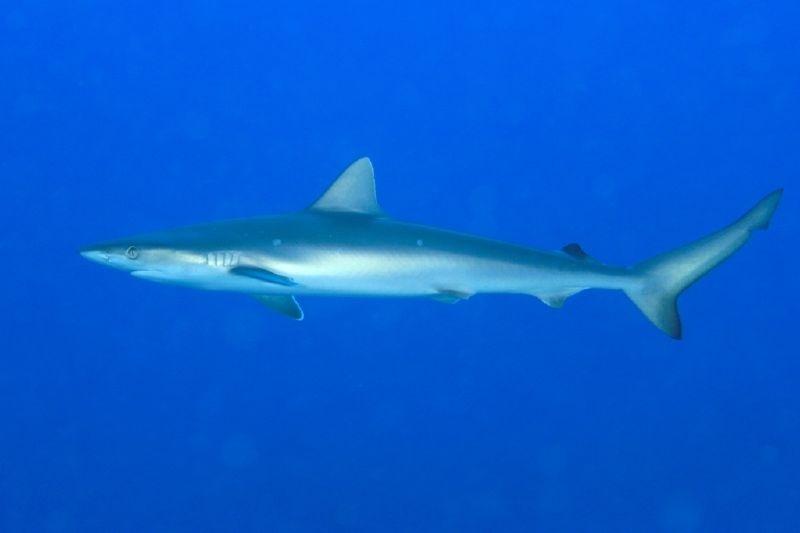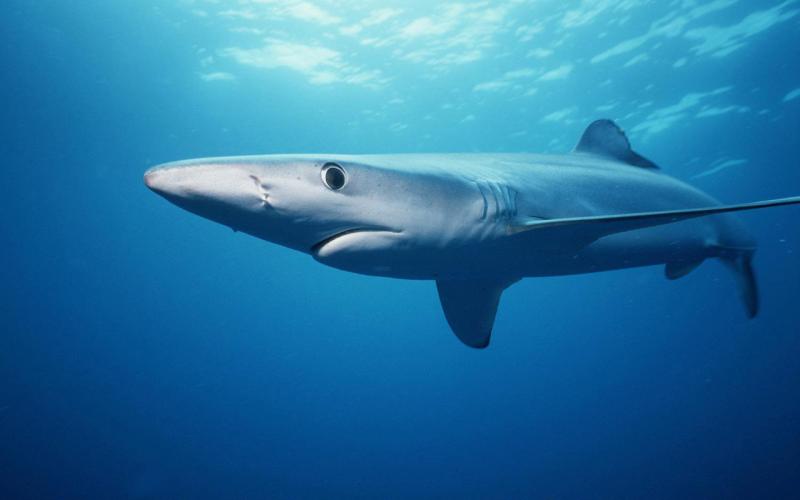The U.S. Atlantic Ocean has some of the most sustainable shark fisheries in the world thanks to a range of science-based management tools. One of these tools is commercial retention limits, which we can adjust during the fishing season to provide fishing opportunities while preventing overfishing.
Karyl Brewster-Geisz, a highly migratory species fisheries management specialist, explains how these limits are set and the role they play in the sustainable management of our shark fisheries.
What is a retention limit?
A retention limit is a cap on how many animals—in this case, sharks—a fisherman can catch and keep during a single fishing trip or day. For instance, a commercial shark vessel with the right permit can bring up to eight blacknose sharks back to shore after every fishing trip. If they caught a ninth blacknose during the trip, they would have to release it using practices that help fish survive after being released.
Blacknose is one of the few sharks that has a commercial retention limit specific to one species. Most retention limits set a cap on the total number of sharks a fisherman can keep from a group of species caught with similar gear.
Why do we set shark retention limits?
Every management tool we use is designed to provide fishermen with as many fishing opportunities as possible while also preventing overfishing. The importance of retention limits is tied to another management tool we use: annual quotas. Retention limits are daily or trip-specific caps. Annual shark quotas are the maximum amount of a species or species group that can be taken from the ocean each year by all fishermen combined.
For species with larger populations or lower commercial value, such as Atlantic sharpnose or smooth dogfish, an annual quota may be enough to prevent overfishing. For more in-demand species, though, retention limits help us make sure as many fishermen as possible can participate in the fishery. They do this by preventing a few fishermen alone from harvesting most or all of the allowable catch. This in turn helps ensure that the quota actually lasts a full year, which provides important stability for commercial fishermen.
How do we determine what the limits should be?
To set commercial retention limits, we start with the total amount of fish scientists have determined U.S. fishermen can harvest without leading to overfishing. We call this a total allowable catch, or TAC. Every shark species or species group we manage has a TAC. We calculate these using population assessments, analysis from international fishery management organizations, historical catch rates, and other data.
From the total allowable catch, we first subtract the estimated number of sharks we expect to be taken from each stock through activities other than targeted shark fishing. For example, the average harvest from recreational fishermen is deducted at this time. What’s left is the annual quota for the commercial industry, which we then divide by region in some cases. As a last step, we calculate a retention limit that we think will prevent the commercial industry from catching above the quota.
Are shark retention limits the same in state waters?
Not necessarily. State and federal shark fishing regulations are, for the most part, the same or very similar. We work closely with the states so that our rules generally complement each other. However, each state along the Atlantic and Gulf of Mexico coasts is responsible for managing shark fishing in their waters. Along the East Coast, state waters extend three nautical miles from shore. But the state-federal boundary can be as much as nine nautical miles offshore of some states in the Gulf of Mexico. States may also have different permit requirements.
Regardless of where they are, though, fishermen with federal permits must always follow the most restrictive regulations. This means they could still be bound to federal regulations when fishing in state waters if the state has less restrictive requirements.
It’s important for shark fishermen to understand the fisheries rules in their state and in federal waters.
Do these limits change?
Yes—that’s important to the success of retention limits. We manage logbook programs that require selected commercial shark fishermen to report back on what they caught during every fishing trip. Dealers are also required to give us details about the species, the amount purchased, and other information for every shark they buy. We use information from these and other sources to monitor how much of the quota has been used.
If fishermen are bringing in fewer sharks than expected, we can raise the retention limit for that species or group. If landings appear to be outpacing the quota, we’ll lower the cap. We use this flexibility to ensure we stay below the TAC while also providing fishing opportunities to fishermen.
Isn’t staying below a quota good? Why would you increase retention limits?
We are dedicated to providing fishermen—whether they are targeting sharks or any of our other managed species—with as many fishing opportunities as possible. U.S. commercial fishing contributes billions of dollars annually to our economy and provides consumers with sustainable seafood choices. We’re able to maintain this balance because our quotas are specifically set to keep maximum harvests below the point that could lead to overfishing.
What happens if a fisherman catches more than the retention limit allows?
Strong enforcement is a critical complement to all of our management tools. NOAA Fisheries conducts patrols both on and off the water. We monitor some vessels electronically, conduct criminal investigations, and use other measures to ensure that fishery management rules and regulations are followed.
Are there retention limits for recreational fisheries too?
Yes, but they’re known by fishermen as bag limits. We follow a slightly different process when we set recreational bag limits. Because they are smaller—for instance, each person aboard a permitted vessel can only keep one Atlantic sharpnose—we don’t currently change bag limits during the fishing season.
Just like in commercial fisheries, though, recreational bag limits allow as many fishermen as possible to catch sharks without leading to overfishing.




